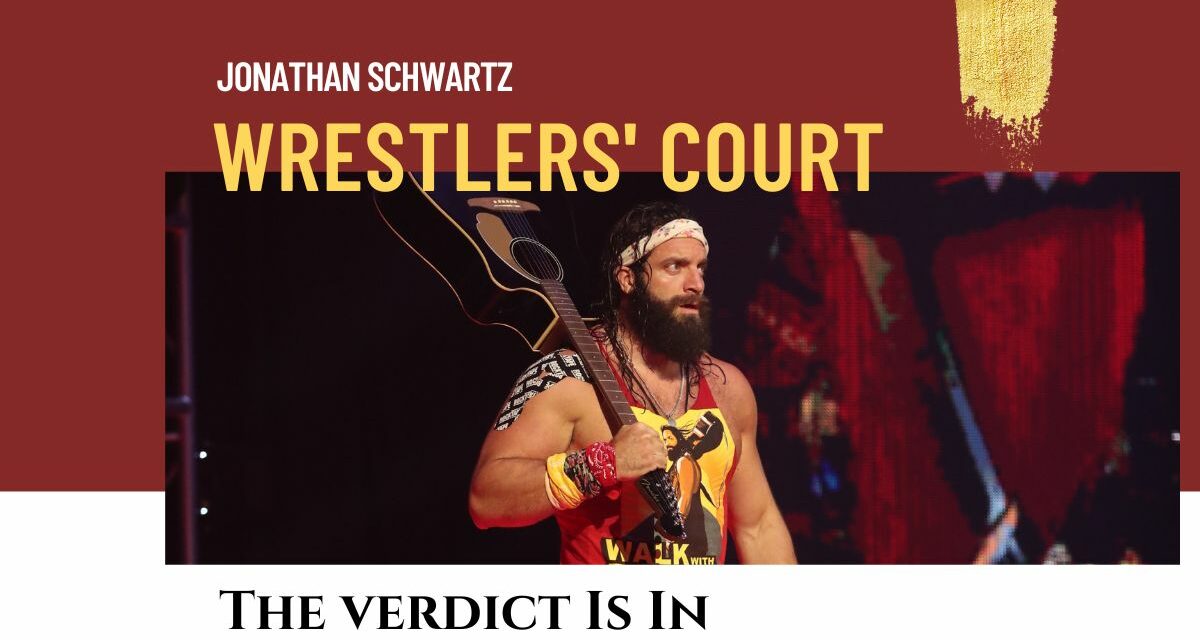When I was in university, I paid for tuition and books by working at a store that sold sporting goods and clothing. I think I learned as much there as I did in school. I certainly learned more about running a business, which has arguably paid off better than the English Literature or Political Science parts of my degree (well, maybe not the Machiavelli stuff, but that’s a story for another day).
One day I spoke with my manager, a smart and friendly guy named Scott, who I looked to as my mentor in all things retail. I asked Scott about a business decision taken by the company that owned the store. It seemed like a big risk that would involve reallocating assets from one part of the company to another, with the effect that some of my colleagues would likely lose their jobs. Scott nodded and acknowledged the human cost for those who would be left behind, but what he said after has stayed with me my whole adult life “a business grows or it dies.”
On September 21, WWE released several members of its roster in a bloodletting that we haven’t seen since the COVID-19 pandemic. Further releases have trickled out since, but for now the list is as follows:
- Dolph Ziggler
- Elias
- Mustafa Ali
- Matt Riddle
- Shelton Benjamin
- Top Dolla
- Riddick Moss
- Emma
- Aliyah
- Rick Boogs
- Quincy Elliott
- Bryson Montana
- Dana Brooke
- Mansoor (Mån.sôör)
- Mace (Ma.çé)
- Shanky
- Dabba-Kato (AKA Babatunde and Commander Azeez)
- Yulisa Leon
- Daniel McArthur
- Kevin Ventura-Cortez
- Alexis Gray
- Brooklyn Barlow
- Ikemen Jiro
- Abule Abadi-Fitzgerald
I’ll leave speculation as to where these men and women will surface next to other columnists, along with the usual ‘dead pool’ of who will be released next. I do note that the current releases followed an incredibly busy few news cycles for WWE and were (and continue to be) expected. On September 12, the long anticipated merger between WWE and the Ultimate Fighting Championship became official. Now operating under the name TKO Group Holdings, the new company is valued at over $21 billion, and trades on the New York Stock Exchange. TKO is led by Endeavor Chief Executive Ari Emanuel. Vince McMahon is installed as executive chairman of WWE while UFC president Dana White is Chief Executive.
Respectfully, if you thought this brain trust would usher in a kinder, gentler approach to business you might want to do some reading. After all, TKO now trusts it’s two brands to one man who allegedly used company funds to pay off a series of mistresses, and the other who was caught on video slapping his wife. TKO has already faced multiple questions about McMahon’s role in the new company, which has advised that he could be ousted while McMahon is still under investigation by the Justice Department and the US Securities and Exchange Commission.
Internet pundits have long speculated as to McMahon’s motivation in selling WWE: how a third-generation promoter has cut his own adult children out of the business going forward, how he may have used his leverage as WWE’s largest pre-merger shareholder to return to the board after leaving last July in scandal; how this play might be his attempt to install himself as lifetime ruler of his own little empire, even at the price of WWE’s independence. I’ll leave all of that to others except to say that the moral outrage associated with WWE’s sale and subsequent layoffs is misplaced.
I sympathize with peoples’ hard feelings, but WWE transitioned from a mom and pop outfit to big business a long time ago. Following my time in retail, when I went to law school one of my first lessons was that corporations may be legal persons but they are amoral. As a corporate entity, WWE and now TKO exist solely for the purpose of making money and enriching their shareholders. One may question the morality of individual actors in their private lives when they become public, but when it comes to the business the junior, lower-valued partner to any merger is liable to shed jobs in a bid to find efficiencies.
WWE releases going forward might well reflect a shift in their approach to contracts to one based more on appearances, like UFC uses. UFC fighters sign a base contract with provisions for further paydays based on a set number of fights. It’s a different model from WWE, which is basically a touring TV show with a live-action stage play component, but it enables UFC to keep about 600 fighters under contract, paying most of them minimally unless they’re used on television. From a bottom line perspective this might be a more appealing approach than paying the likes of Boogs or Emma or Moss or Mansoor to stay home (the latter was particularly aggrieved; once he was out of a program he couldn’t be sent down to NXT per WWE’s relationship with the Saudi Arabian government, which forbade Mansoor to lose).

Nick Khan
In the wake of the announced merger, President Nick Khan announced that offscreen workforce reductions would begin. WWE staff were told to work from home so they could be let go privately. Between 50 and 100 behind-the-scenes WWE executives and staff lost their jobs, many in IT and Marketing. These workers don’t have the profile of pro wrestlers or the ready access to social media to help drum up new business. I feel for them. I also understand that this is part of the corporate world. Job losses, especially in parts of companies that are not as easily understood by bean-counters, necessarily follow mergers and buyouts. Even from a business perspective, I don’t think it’s always a great idea: WWE lost a tremendous amount of institutional knowledge and a marketing team that was in tune with its fan base — which I suspect is different from UFC’s. Human cost aside, bloodlettings like this privilege short-term savings over long-term successful strategic thinking: the kind that made WWE worth a $9-billion business valuation in the first place.
Not that anyone’s asking me.
Back to wrestling.
As we have seen in previous waves of releases, the list is a mix of established stars, some of whom were engaged in active programs (Ali, Riddle), veterans who have been largely absent from TV (Ziggler, Benjamin), super-talented performers whom WWE just couldn’t figure out (Elias, Mace), NXT call-ups or roster additions who never really had a defined role beyond extra work (Emma, Rick Boogs, Riddick Moss) and NXT wrestlers who just never took that next step to the main roster (Ikeman Jiro, Abule Abadi-Fitzgerald). Some of these releases may seem perplexing; it’s tough to imagine that there’s really no place for the likes of Elias, who made the most of a series of silly gimmicks; or that Ziggler couldn’t have been used on commentary or as a manager given his mic skills, or that Benjamin wouldn’t have been a great agent or trainer in NXT. Others, like Riddle or Top Dolla or Quincy Elliott seemed to have punched their own exit tickets either through poor in-ring performances or extracurricular behavior that threatened their employer’s reputation.
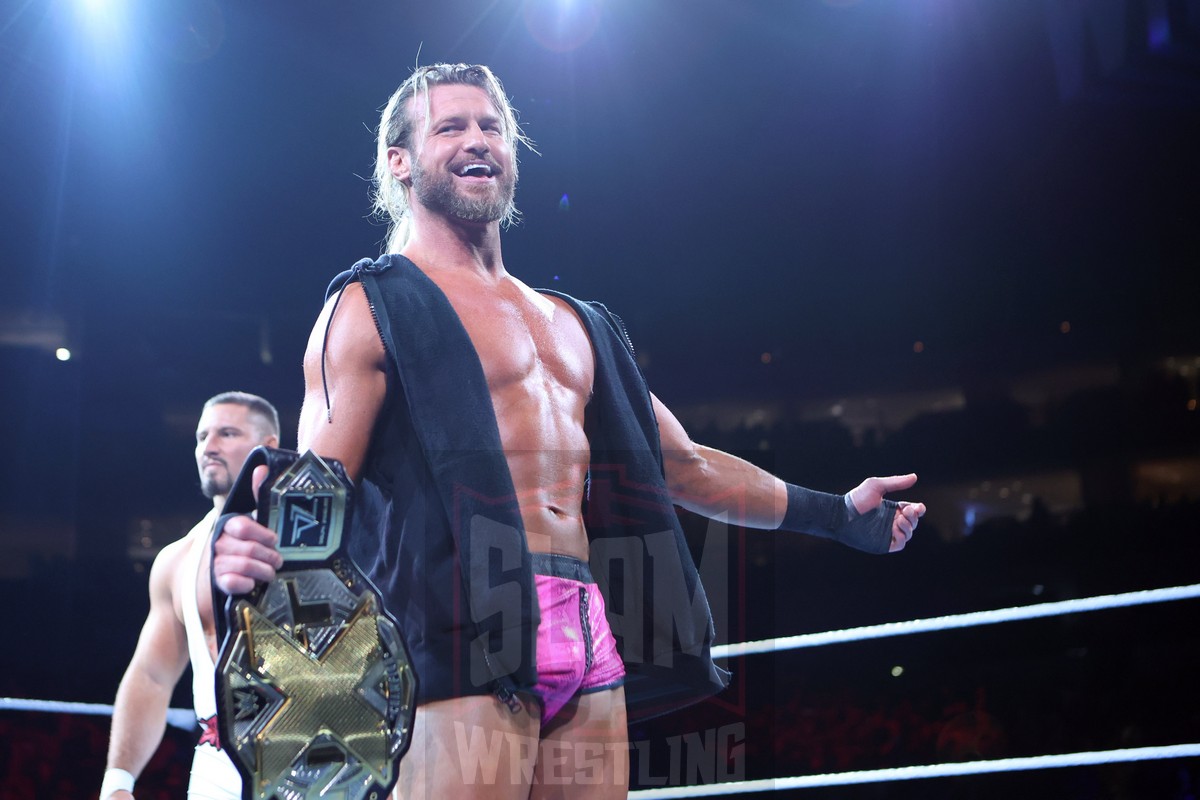
Bron Breakker Vs Dolph Ziggler (C) for the NXT Championship at NXT Stand & Deliver on Saturday, April 2, 2022, at the American Airlines Center in Dallas, Texas. WWE Photo
I appreciate that wrestling fans may be upset by the current round of talent layoffs, as they have been by every round that preceded them. This time around outrage appears to center on the likes of Nick “Dolph Ziggler” Nemeth, who was released after 19 years with WWE; Shelton Benjamin, who has been with WWE off and on for over 20 years, and Jeffrey “Elias” Sciullo, who was released after nine years with the company, where fans including myself regularly complained about how underused he was. Factor in time in NXT (which in some cases talent weren’t able to escape) and most of the wrestlers who have been let go had ample time to make themselves indispensable or, if a career with WWE was all they wanted, to find other, longer-lasting roles with the company.

Mustafa Ali
It is possible that some of the talent mentioned had been offered different jobs but opted for free agency instead. It is likely that several of the wrestlers on this list were ready to move on from WWE in any case and welcome the opportunity to continue their careers in ring or outside of it, on more of their own terms. Ali’s release was surprising from a storyline perspective: he was due to challenge “Dirty” Dominik Mysterio for the NXT North American championship. In real life, his departure is a long time coming. Ali started with WWE in 2016 as part of its late, lamented cruiserweight division. In January 2022 he posted on Twitter, publicly requesting to be released from his contract. Ali would later state that this public message only came after repeated requests to leave. WWE denied his request until timing and money suited them. Ziggler was rumored to have made similar requests two years ago, although he kept his business private. He was convinced to stay until he was let go. NXT wrestler Yulisa Leon, who spent much of the last year on the shelf with a torn ACL, issued a statement on September 24 confirming that she had also asked for her release.
As hard as it is to lose one’s job, it’s worth noting how the recently released talent have handled it publicly. Most of the talent on this list has stayed quiet on social media, which is probably the best play since prospective employers including other wrestling companies are likely paying attention and, unless you marry into the promotion, sooner or later a vast majority of pro wrestling contracts will end.
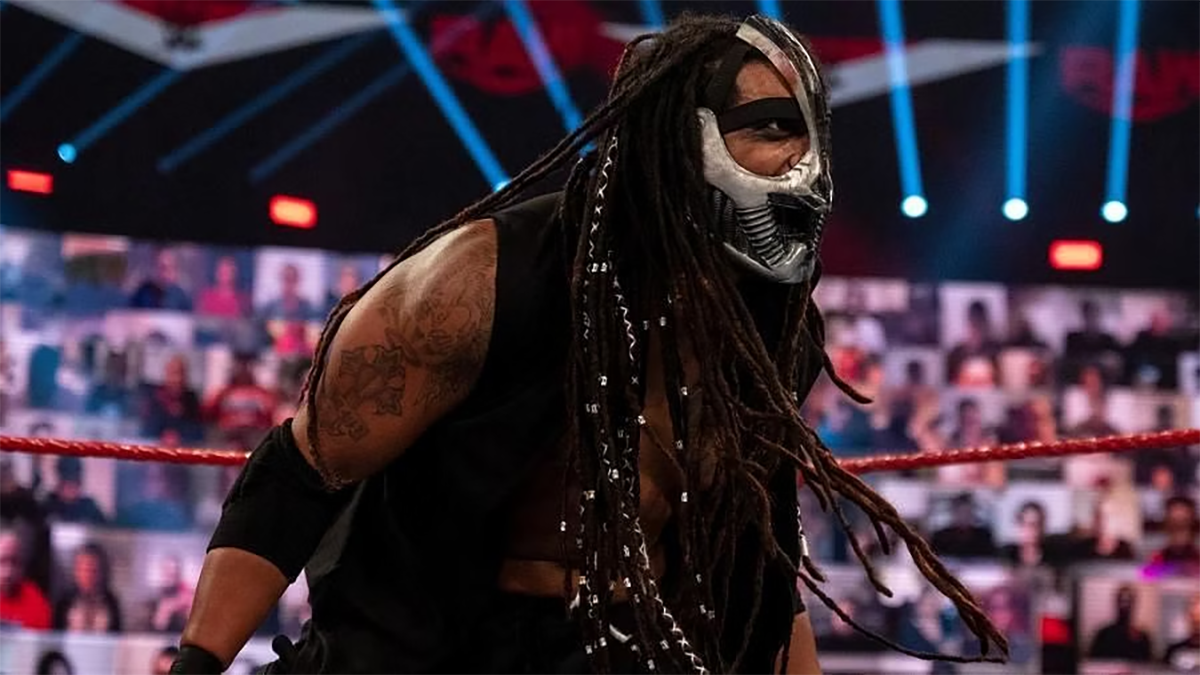
Mace
Brennan Williams, the former Mace and Dio Maddin, summed his feelings up on Twitter and his recurrent podcast on Discord. He wrote:
After almost 10 years of making something out of nothing I’m excited to spread my wings and be myself for the first time. Let’s take this anime reference to the next level. STEP INTO THE GRAND TOUR.
I think Williams speaks for many former WWE wrestlers, whose career arc starts with them feeling as though they’ve achieved a lifelong dream when they sign up, only to find by the end that they can’t wait to get out.
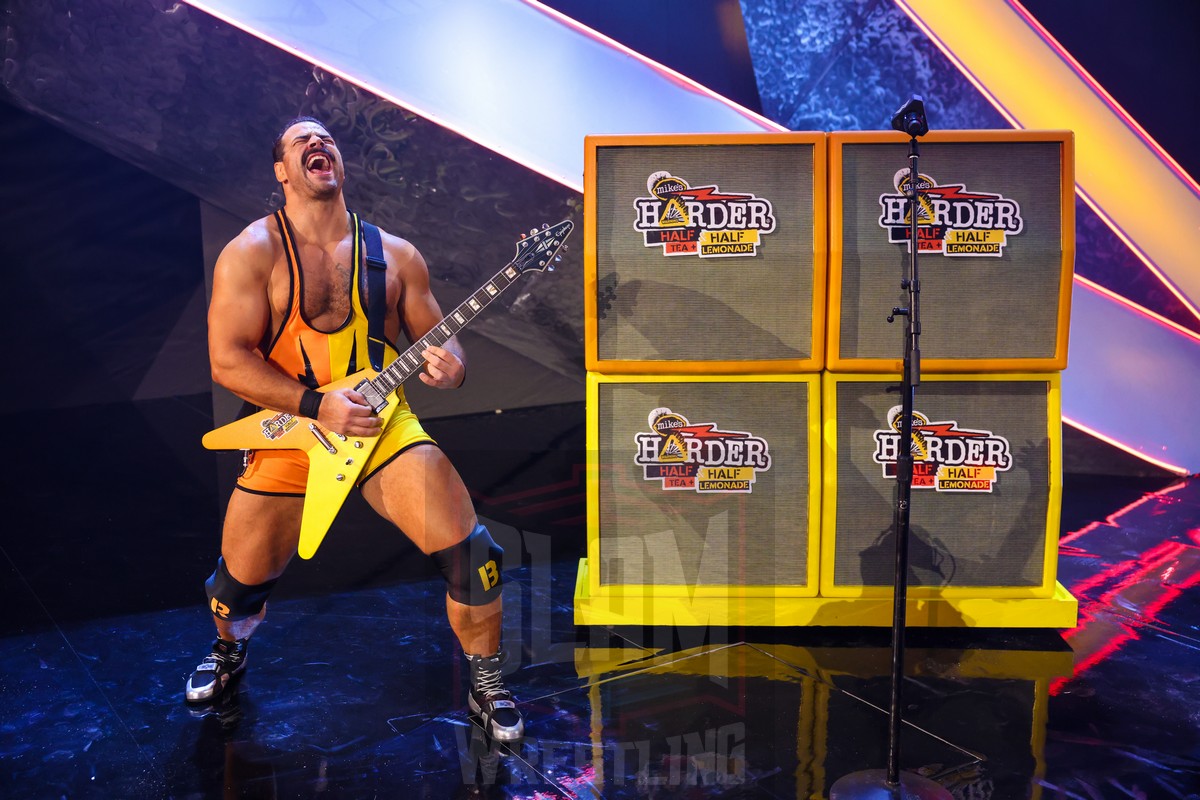
Rick Boogs shills and shreds at WrestleMania 38 at AT & T Stadium in Arlington, Texas, on April 2, 2022. WWE photo
Bigger, more ‘professionally-minded’ corporate wrestling outfits like AEW or NJPW would probably rather hire talent who come across positively and profess gratitude like Dana Brooke or Benjamin or Elias have on Twitter (all of whom came across very well in accepting their releases and looking forward to the future), as opposed to Top Dolla, who took to Twitter and claimed he was let go over racism-fueled allegations that he was ‘difficult to work with’. Or Rick Boogs, who claimed his release was due to a conspiracy following Vince McMahon’s abortive resignation as WWE head (although Boogs did not seem to benefit from McMahon’s Restoration).
And that’s assuming that after months or years in the WWE machine, recently released talent want to stay in what we all know can be a tough, exploitive business. Outside the ring, Ziggler is known to be an intelligent man — he notably put off a law school education when WWE came calling (I would have done the same, I guess Jim Ross lost my number): he’s 42 years old and has a performing career doing stand-up comedy outside of wrestling. He is said to have been careful with his earnings so why not test himself in a different environment?
I sympathize with anyone who loses their job. I’ve been there. Even with a backup plan in place (and we don’t always have those) or significant savings to tide one through to the next gig (and in this economy, those savings become much less significant), unemployment is profoundly unsettling and, until you land your next gig the pressure can feel unbearable. But if you follow pro wrestling, much less live it, you know that one is hired by WWE to eventually be fired. Wrestlers’ tenures on RAW and SmackDown are longer on average than they used to be, but WWE’s hiring and firing practices have long been arbitrary and capricious — especially where Vince McMahon is concerned.
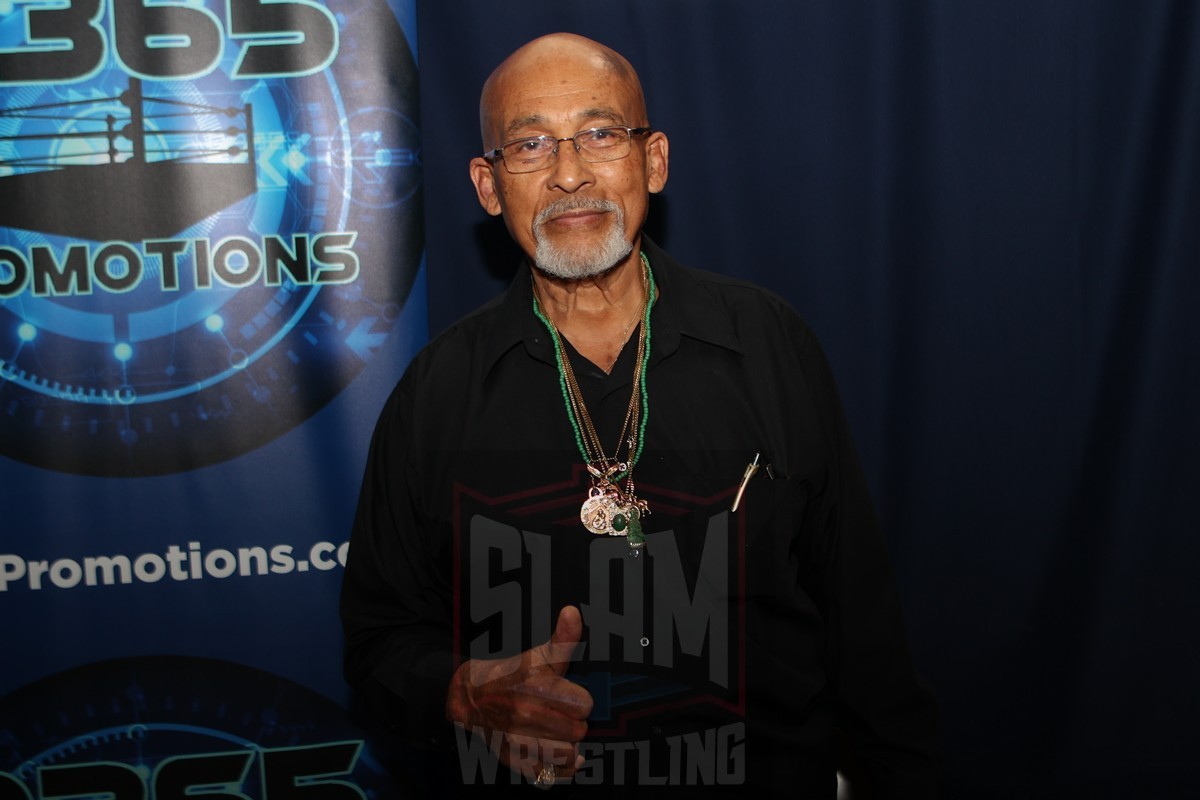
Johnny Rodz at The Asylum WrestleBash ’22 on Saturday, August 20, 2022, at the Police Athletic League in Parsippany, New Jersey. Photo by George Tahinos, https://georgetahinos.smugmug.com
I’ll pause to note that in the WWF of my youth, the idea that a wrestler would stick around in any capacity for ten years, much less 20 would be unthinkable for all but a few repertory players on the roster. Most of the time, a promotion would hang on to a few valuable wrestlers to help build a succession of challengers to a long-term local champion; in the old WW(W)F that might include the likes of Chief Jay Strongbow, Baron Michel Scicluna, Tony Garea, Dominic Denucci or Johnny Rodz (most of whom had other jobs too).
In cases like the WW(W)F or AWA that champion would be one of the few in-ring personnel locked into a long term contract; they might even be part or sole owners of the promotion. In other cases, a similar formula would apply with the caveat that the touring NWA champion would lend the local wrestlers legitimacy by fending off periodic challenges. In any case the roster would be lean and the undercards would be repetitive, designed to introduce new stars and bump them up to challenge the local champ before moving on to the next territory. This was the case for most of Bruno Sammartino’s and Bob Backlund’s title reigns.
The formula only started to shift with the WWF’s expansion in the 1980s, when the territory system gave way to pro wrestling as a single touring show, first around the US and Canada, then around the world. Local talent would increasingly be evaluated and snapped up, or used as bottom rung enhancement on syndicated shows, never to be seen broadly again. You see this evolution from the mid-1980s through the mid-1990s. Even as the WWF started to emphasize character work and costumes and entrance music for its budding superstars, it still relied on less flashy enhancement guys to make the prospective main eventers shine. “Squash matches” featured the likes of Mario Mancini, Steve Lombardi, Dusty Wolfe, Jose Luis Rivera and Barry Horowitz; often less buff and tan than their opponents, always putting up mild resistance before losing.
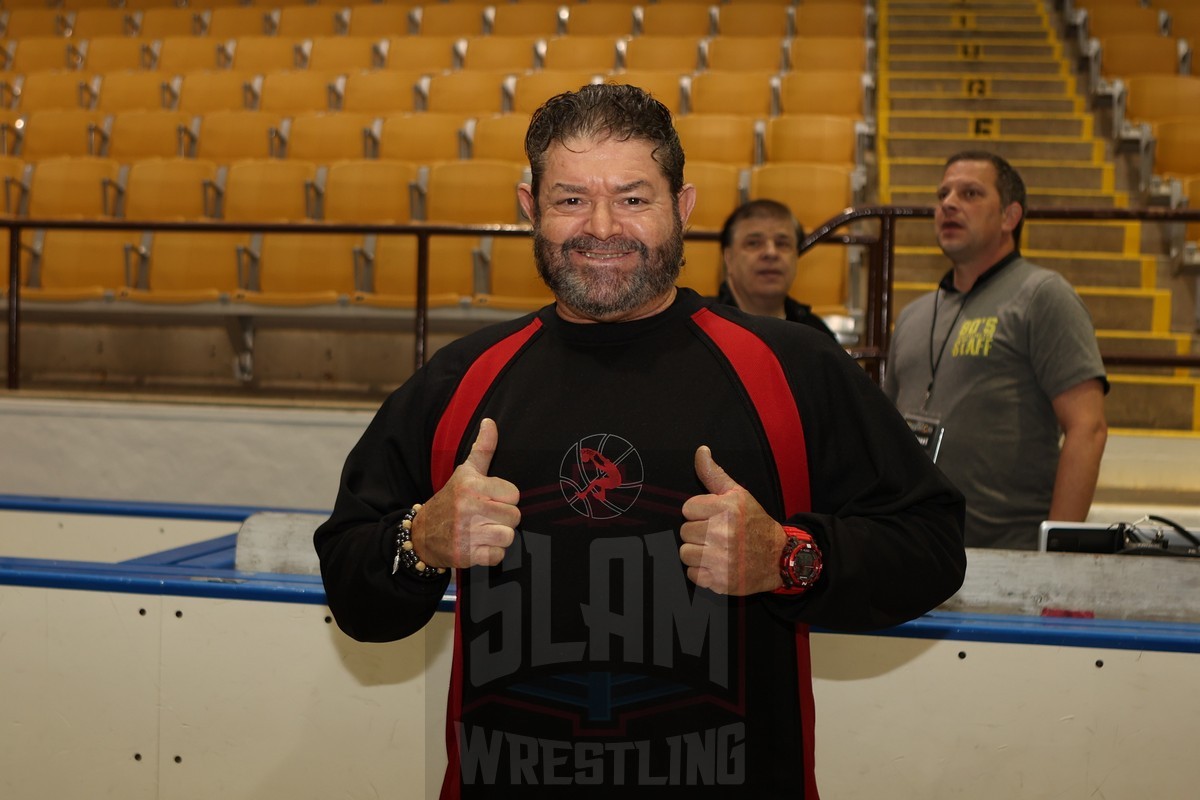
Barry Horowitz at the 80s Wrestling Con on Saturday, May 7, 2022, at the Mennen Sports Arena in Morristown, New Jersey. Photo by George Tahinos, georgetahinos.smugmug.com
These men were under full WWF contracts and as much a part of the company as Ricky Steamboat, Randy Savage or Hulk Hogan, but were likely paid a lot less and looked lot more like I would, if I were to step into the ring today (I have no doubt that in a shoot they would leave me in a heap).
As the WWF’s touring model grew more sophisticated, these performers’ roles would evolve. Bland, ‘local’ enhancement talent would be phased out and every wrestler would get a gimmick no matter their place on the card. Early attempts to bridge this gap included making over Lombardi as the Brooklyn Brawler, leaning into stereotypes with Star of David ring gear and “Hava Nagila” entrance music for a newly-nerdy Barry Horowitz, or a short-lived push with matching trunks and fancy jackets for Paul Roma and Jim Powers as the Young Stallions, complete with theme music stolen from the Hart Foundation.
By the mid-’90s, the WWF had mostly left the company enhancement talent model behind. Every wrestler was a superstar with his or her own gimmick, and whether they won all the time or lost all the time, the days of the random jobber had ended. Today, you occasionally get unnamed ‘local competitors’ on RAW or SmackDown, but they’re saved for the most savage beatings in order to get monsters like Braun Strowman or Ryback over.
Still, these runs were short compared to what we see today. Horowitz had two WWF runs spanning three and six years. Mancini started in 1984 and lasted eight years. Rivera’s tenure ran nine years but was largely split between the WWF and Puerto Rico. Roma’s and Powers’ runs overlapped, but they both worked in the WWF for seven years.
While their win-loss records were unenviable, these enhancement talents still had the advantage of roles that provided a measure of job security. Look through the first 15 or so WrestleManias and you’ll see the pattern. With a few exceptions for top talent or those who had management’s ear, most wrestlers would wind up being built swiftly within a year or two, plateau, then just as quickly move down the card and out the door. Paul Orndorff is a frequently cited example: he went from main eventer to opening match to out of the business entirely within three WrestleManias (he was left off the WrestleMania III card, and would leave the WWF in January 1988). If you compare the original WrestleMania to WrestleMania X you’ll see that the only wrestler the two cards have in common is Leilani Kai, who was part of a key angle in the first show and a one-off title challenger to Alundra Blayze at WMX. Mike Rotunda would have been the other; he and Barry Windham would lose the WWF tag team championships to the Iron Sheik and Nikolai Volkoff at WrestleMania. As IRS he was scheduled for a multi-man tag match at WrestleMania X, but that got cut due to time constraints.
In the meantime, talent might cycle in and out for a few years at a time, but the roster was generally more fluid. This was less of an issue since until the WWF bled the territories dry, a wrester could move on to a different promotion (like the AWA, JCP or independents like Memphis or Dallas or Portland) with most of their intellectual property and name recognition intact. The gulf in paydays would grow as the WWF took over mainstream pro wrestling but it was still possible to leave and come back refreshed across a few runs. As the smaller territories failed the lack of security would become a bigger problem for wrestlers and the business as a whole especially when bigger companies where talent could really reinvent themselves like the AWA and World Class Championship Wrestling, then ECW and WCW went out of business.
With few real opportunities in the US or Canada (and some lag time for TNA/Impact and Ring of Honor to develop into viable businesses that could reliably make payroll) wrestlers became increasingly beholden to WWE, resulting in longer, less productive runs, more creative stagnation and the cycle of signing promising talent to ‘take them off the board’ for would-be competitors, only to dump them in mass releases, as we still see today. Without thriving promotions running against WWE, talent was left to try to get over on its own in an increasingly policed, scripted atmosphere… then blamed and cut if WWE brass failed to recognize a good thing when they had it.
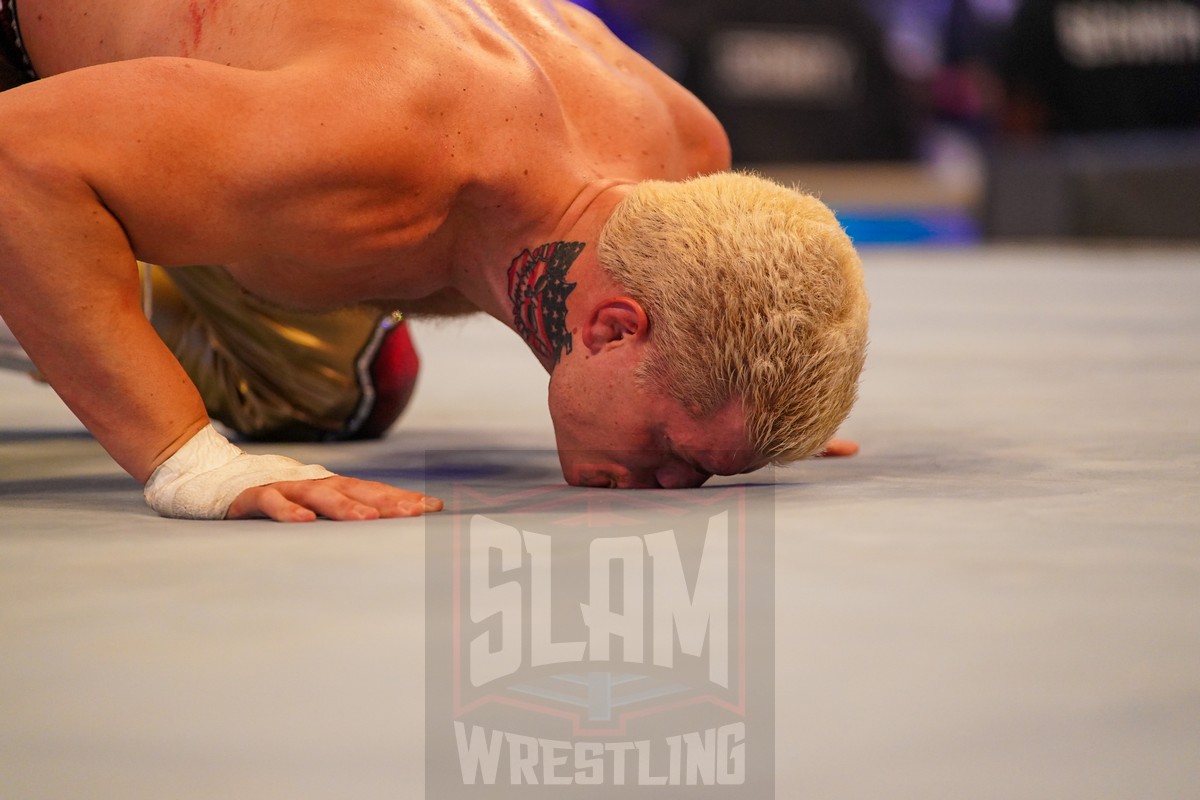
Cody Rhodes vs Seth Rollins at WrestleMania 38 at AT & T Stadium in Arlington, Texas, on April 2, 2022. WWE photo
Ask Cody Rhodes how his first decade in WWE went; or Drew McIntyre’s seven-year stint that saw him clown around with 3MB. Matt Cardona’s WWE run as Zack Ryder lasted 15 years and saw him reinvent himself a few times. He was well ahead of WWE in leveraging the nascent wrestling internet and built his own fanbase, only to be booked as a joke back down to enhancement work. To his credit, Cardona has been vocally supportive of those who were let go. On September 21 he wrote:
TO THOSE WHO WERE JUST RELEASED
This can be the END of your career…
Or it can be the BEGINNING……
Look yourself in the mirror and decide.
I promise you the work and the MONEY is out there.
It’s not easy. It’s a grind. It’s a hustle. It’s frustrating…
But it also can be incredibly rewarding (in more ways than one) IF YOU WORK YOUR F–KING ASS OFF!
I hope to see a lot of you down the road.
Rhodes and McIntyre stand as examples of underused talents who went out into the hustings, recrafted their identities and found their way back to WWE with a more appreciative climate. Cardona has yet to go back, but he may be one of the best examples of wrestlers who parlayed their time into WWF into better things outside it — and Cardona did so without a significant run in AEW. Today’s wrestlers are in a much better position outside of WWE than they were a few years ago.
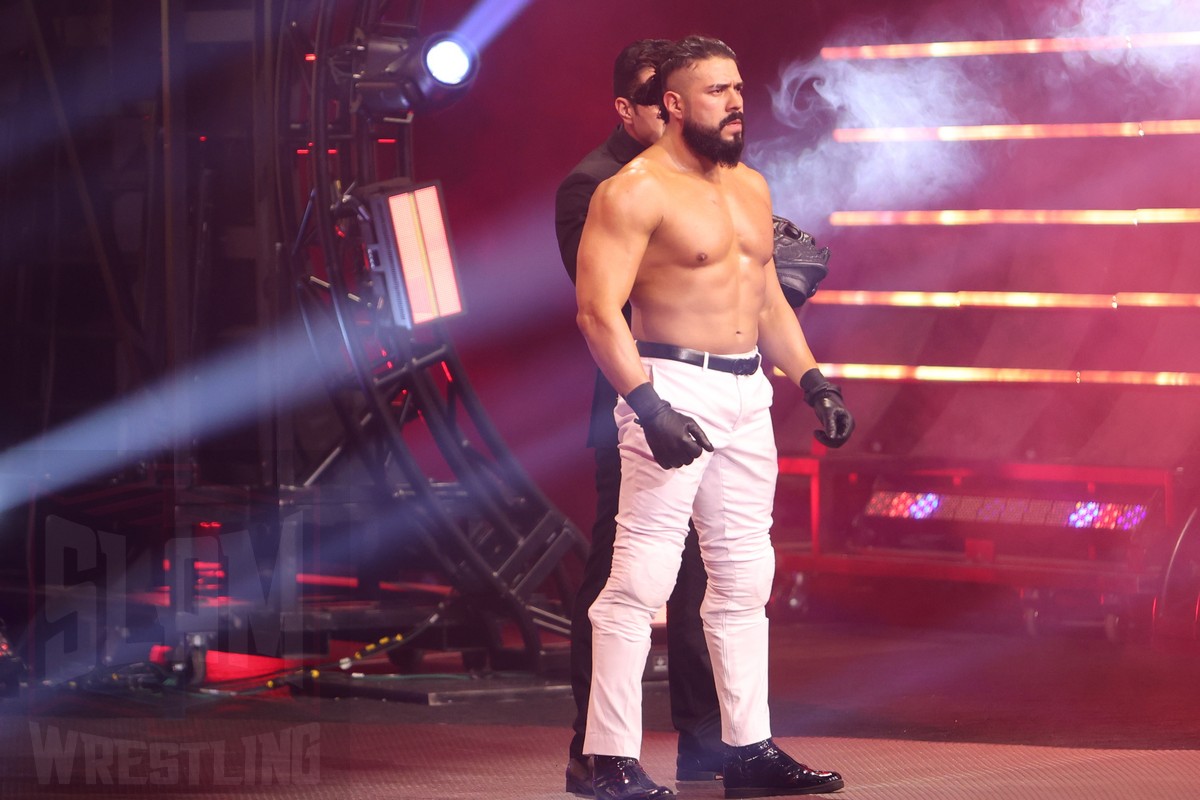
Andrade El Idolo before the Casino Ladder Match at AEW Dynamite on Wednesday, October 6, 2021, at The Liacouras Center in Philadelphia, PA. Photo by George Tahinos, https://georgetahinos.smugmug.com
AEW may be the primary option for some, while others might take advantage of the greater creative freedom offered by Impact and the NWA to truly reinvent themselves. I think it’s fair to say that AEW has a mixed track record with its WWE reclamation projects. Cody Rhodes was a day one superstar, and Christian’s current age-defying run is a blast, but Andrade, Malakai Black, Miro and Big Bill (among others) are often lost in AEW’s shuffle as well. Eric Young has switched back and forth between Impact and WWE and is a consistent upper-card player with a defined gimmick under Anthem’s auspices. Steve Maclin was a non-entity in WWE for years. He recently got an Impact World Championship run and has shown he’s capable of way more as a competitor than we ever saw in NXT. The NWA’s championship history post-Dan Severn has mostly featured underused former WWE talent including Rob Conway, Colt Cabana, Trevor Murdoch, Tyrus (yeah, yeah, him again) and current champion — and former Impact champ and WWE punchline EC3. The former ‘Masterpiece’ Chris Masters and Damien Sandow are there too; I hope they get their due as well.
Outside of these options, the US and Canadian independent scenes are thriving and the DIY nature of social media has made self-promotion much easier than the days of dirt sheets and tape trading. Resurgent interest in Japan and Mexico has opened up jobs for pro wrestlers in those countries, where wrestlers who are better athletes than spokespeople can take advantage of cheap “gringo’ or “gaijin” heat for successful runs.
As long as Billy Corgan’s NWA doesn’t prioritize signing Top Dolla and packaging as Son of Tyrus, we’ll all be fine.
TOP PHOTO: Elias at WrestleMania 36. WWE photo
RELATED LINK
